|
Mindanao Cattle Research and
Development Project (MCRDP)
By: Cecilio
Felix, DVM
MCRDP: Resource Person, Project Staff UP Mindanao
On February 15, 2012, a Memorandum of Agreement (MOA) was signed to
establish the Mindanao Cattle Research & Development Project (MCRDP) on
the designated area of Bago Oshiro within the University of the
Philippines Mindanao Campus. The MOA was signed by Efren C. Nuestro, DVM,
of the Bureau of Animal Industry (BAI), Oscar Parawan, DVM, of the
Department of Agriculture Regional Field Unit XI (DA-RFU XI), Gilda C.
Rivero, PhD, Chancellor of the University of the Philippines Mindanao, and
Cecilio T. Felix, DVM as Resource Person from the US and member of the
Project Staff of the University of the Philippines Mindanao.
Prior to the preparation of the MOA, I met Mr. Sebastian L. Angliongto, of
Davao, Mindanao, while visiting friends in Sacramento, CA in 2009. Mr.
Angliongto, who was active in community development in Davao, mentioned
the need to develop the livestock industry in Mindanao. In 2010, in a
meeting/workshop arranged by the Bureau of Animal Industry, I introduced
the use of smaller cattle like the miniature Hereford breed in the U.S.
and a breeding program as an option to develop a beef type cattle in the
Philippines. In attendance were Nuestro C. Bueno, DVM, Director of BAI, R.
O. Cresencio, DVM, of BAI/LDD, P. C. Limson, DVM of BAI (AI National
Coordinator, T. M. Topacio, Jr. DVM, of the College of Veterinary Medicine
(National Scientist), B. C. Albarece, DVM, president, Federation of Cattle
Association of the Philippines. In the same year, 2010, as arranged by Mr.
Angliongto, similar familiarization workshop was conducted in the Davao
Chamber of Commerce before the members of the Federation of Cattle Raisers
Association of the Philippines in Mindanao, headed by Dr. Ben Albarece, UP
Chancellor Gilda Rivero, and Dr. Rafael Mercado from DA-RFU XI.
The last four individuals named above spent so much time and effort
working with the Bureau of Animal Industry and the Department of
Agriculture 2011 to facilitate the completion of the final MOA and
including the initial funding for MCRDP (June, 2011) for the purchase of
livestock.
In March, 2011, during the BAI 81st Foundation Anniversary, I conducted
another workshop with Dr. Ben Albarece to emphasize the advantages of
raising miniature cattle in a country where pasture land is limited. The
advantages of Miniature Hereford Cattle (as full blood Hereford) are: high
feed conversion (25 to 30% less feed); docile/disposition, easy to handle,
hardy, adaptable to various climates, higher profit ability; stocking rate
is 3:1 per acre compared to large cattle, early maturity; slaughter weight
in 16 to 18 months or earlier is 700 to 1,100 pounds or more depending on
the type of miniature based on heights and breed; and resistance to
certain parasites.
The breeding methodology and cattle management technology used in MCRDP
are simple and easily understood. The Department of Agriculture and the
University of the Philippines and other State Universities in the country
have adequate technical resources to conduct and sustain the project such
as providing efficient utilization of pasture and other management support
to improve existing conditions.
OBJECTIVE OF MCRDP: The main objective is to attain genetic independence
for sustainable beef and dairy cattle production without duplicating
current efforts and developments by the
National Dairy Authority. Genetic improvement is accomplished by breeding
selected Philippine native heifers or cows through Artificial Insemination
- using semen from a line bred, certified pure breed Miniature Hereford
bull from the U.S. that were donated by the writer on March 14, 2011 - to
jump start the breeding program.
The breeding program used in MCRDP is based on actual research and
development by private cattle breeders and educational institutions in the
United States in the last forty years. It involves line breeding,
outcrossing, and bull selection to develop a new foundation herd of small
beef type Hereford cattle in the Philippines as well as the needed bull
that has the prepotency to breed true, and replicate itself year after
year.
I would like to emphasize that in MCRDP, we are not using two known breeds
with pedigree history. The project used 24 Philippine native heifers with
very little known documented history; introduced to the Philippines from
mainland China and Mexico 400 years ago. Variations in physical
characteristics in the F1s from the original sire are possible considering
the genetic influence from both sides at 50/50 percent.
NOTE: In this brief write up, some details are not included. The first
successful artificial inseminations started on January, 2014 and continued
through the year 2015. Of the original 24 heifers, 16 were bred
successfully ( by AI ) and gave birth to sixteen (16) F1s: 8 bull calves
and 8 heifer calves. The line breeding program will actually start in 2016
as the F1 heifer calves as well as the selected F1 bull reach the age of
puberty and under acceptable nutritional conditions.
I am attaching several photos of the F1s (bulls and heifers calves) that
are now from 8 months to 16 months old, and what we do in MCRDP. These F1s
resemble almost the sire in color and conformation and height although the
blood influence from both side is 50/50. The physical characteristics
observed in the F1s are very encouraging and desired.
Briefly as cited in PART III -
GENERAL PROVISIONS OF THE MEMORANDUM OF AGREEMENT, all collaborative
works, research, projects and other contributions given to the success of
MCRDP by individuals or groups must be duly respected. I do not claim that
my part or contribution to this Project be compensated. The MINDANAO
CATTLE RESEARCH & DEVELOPMENT PROJECT is funded by the national government
( tax money ). I understand that the Philippine citizenry is the
beneficiary of this Project.
Cecilio T. Felix, DVM
7456 Colbert Drive
Rancho Murieta, CA 95683
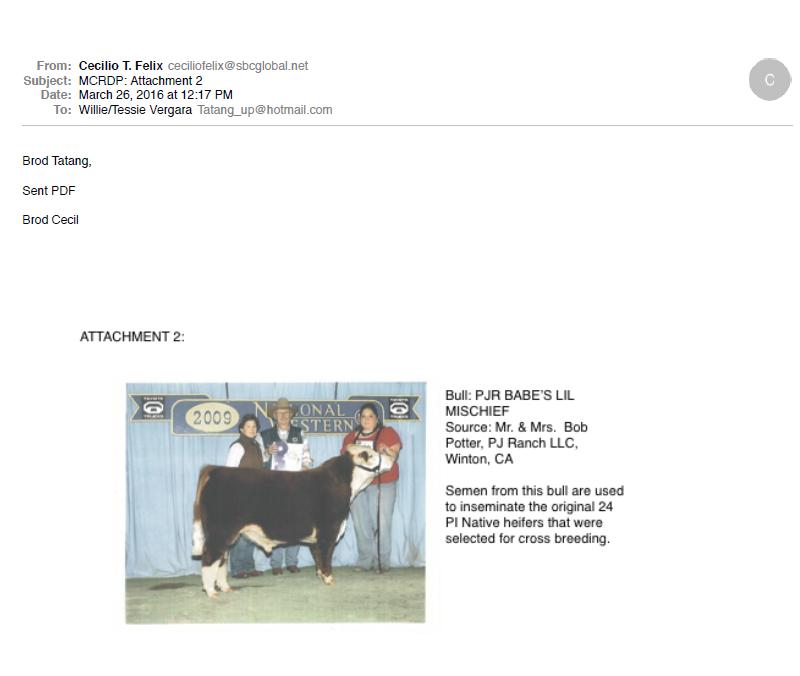
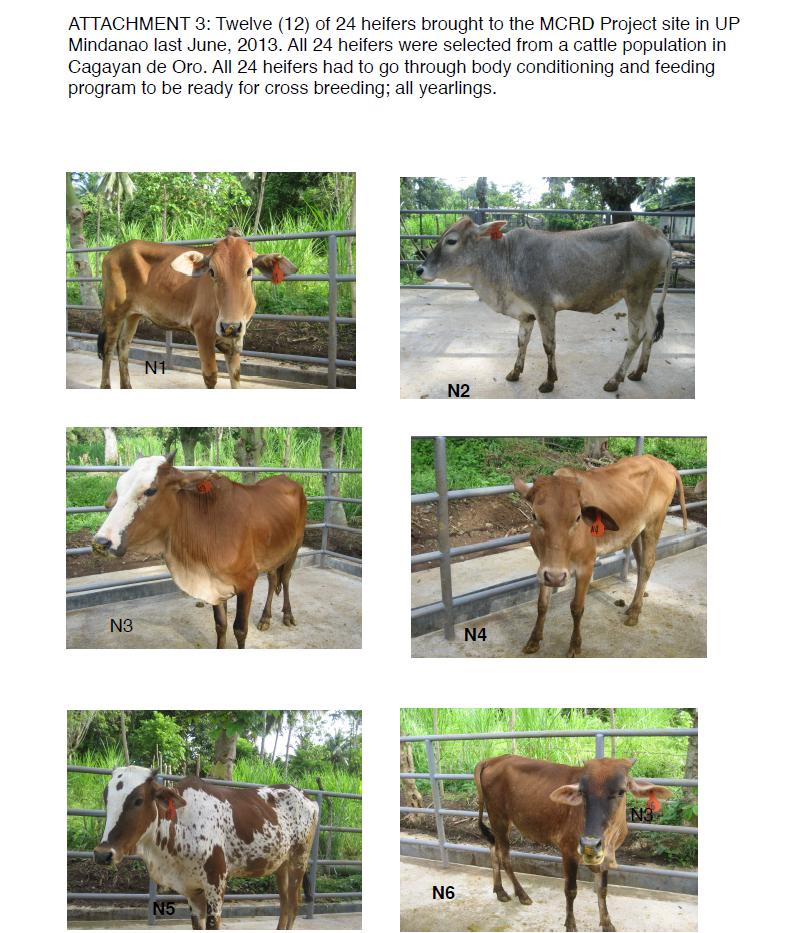
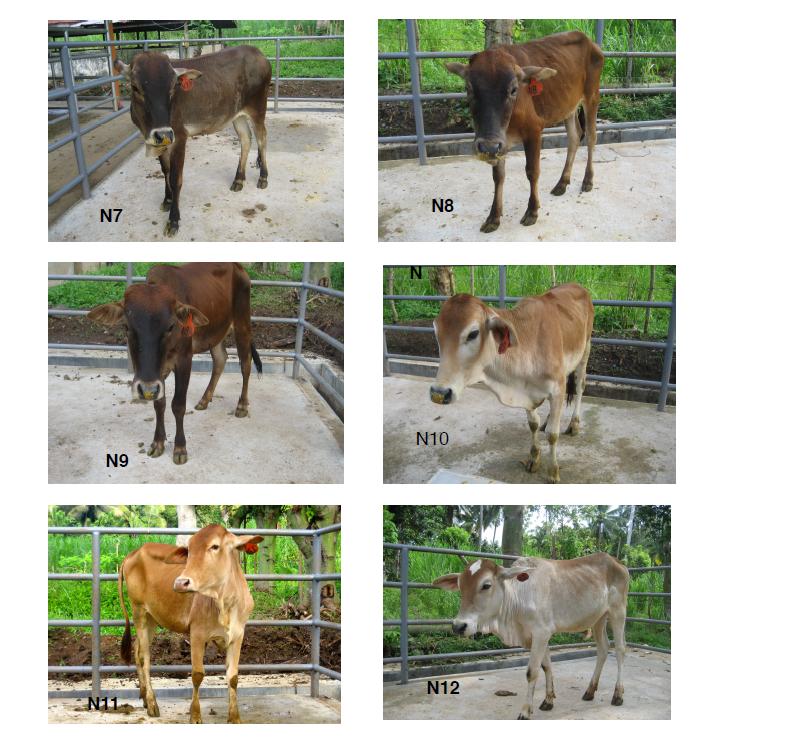



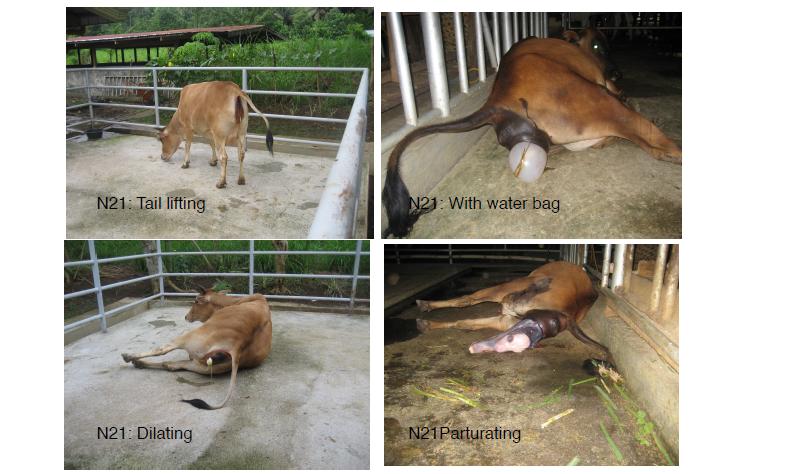
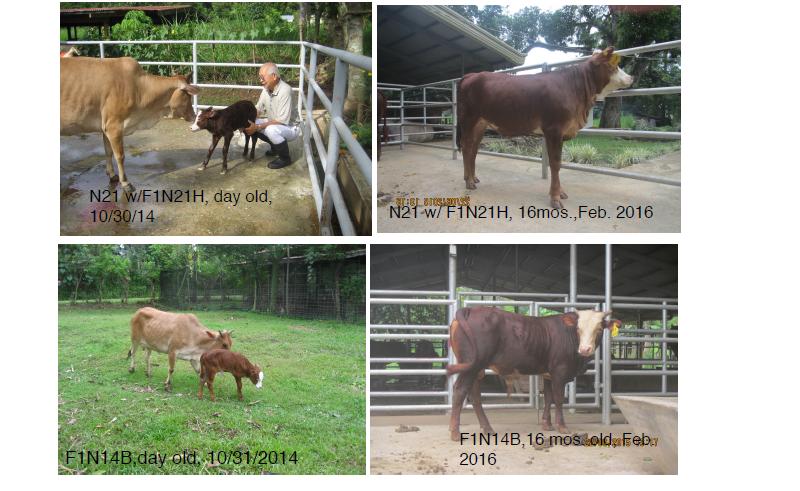

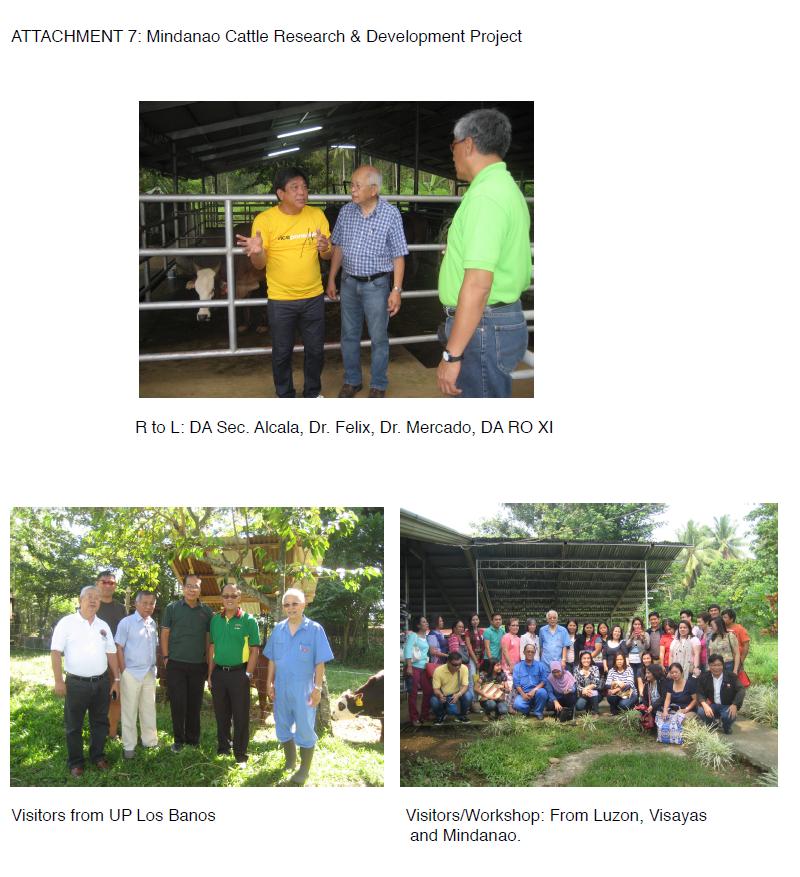
*Web note: To read article on launching of MCDRP,
go to Chapters>Mindanao Chapter>Updates>2014 Apr 14 or simply
click here.
(Back
---> UP Mindanao Updates)
(Back --->
Current Features)
|

